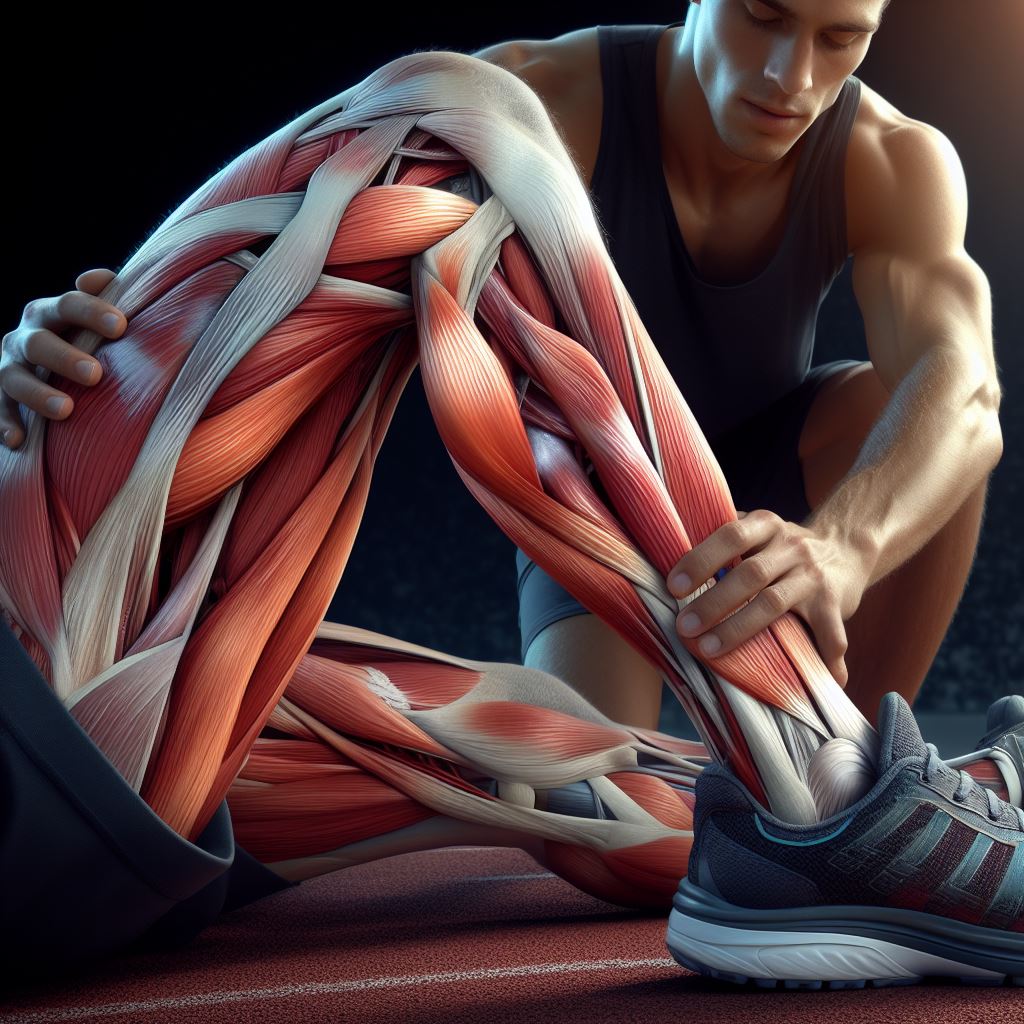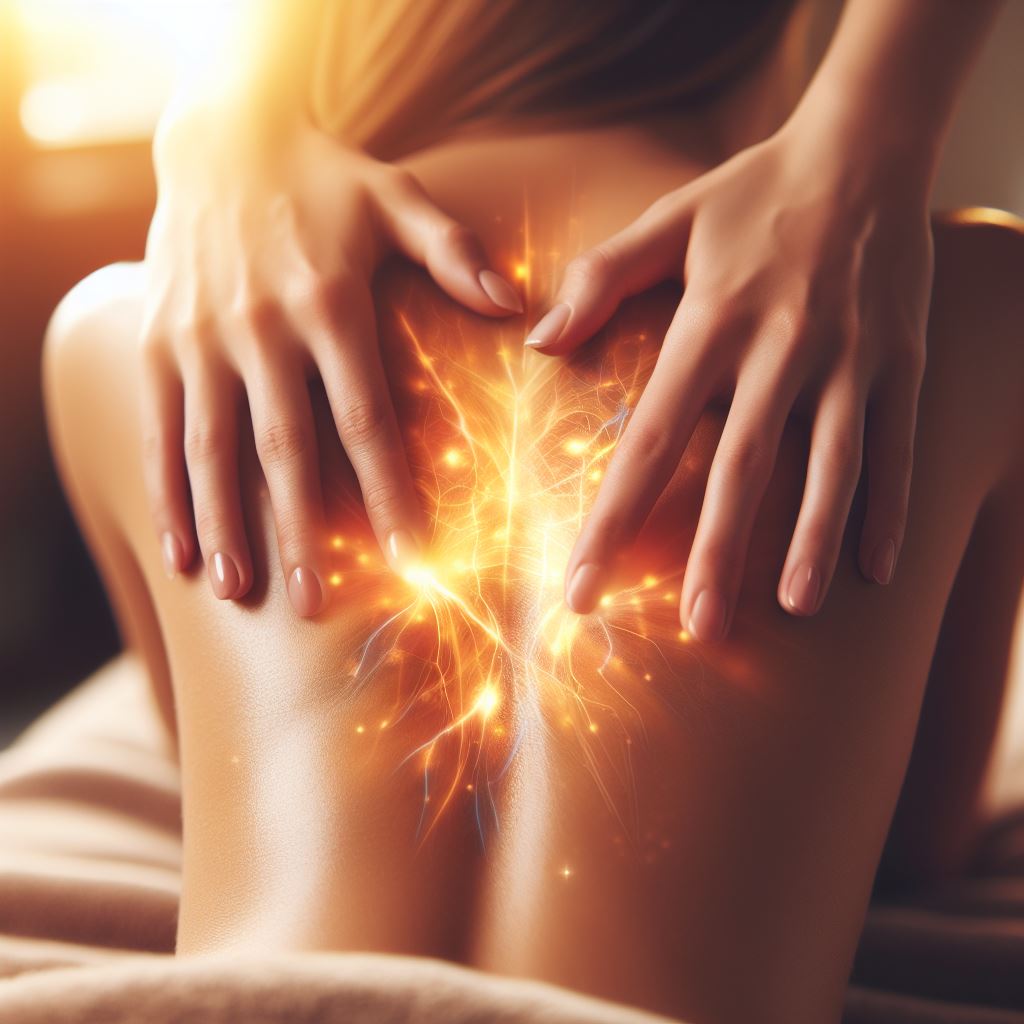Introduction
Massage therapy has been utilized for centuries to improve overall health and wellbeing. As we dive deeper into the science behind this ancient healing art, fascinating new fun facts continue to emerge about the wide-ranging benefits of massage.
Massage can be defined as the manual manipulation of the soft tissues of the body to enhance physical and mental health. Techniques can include kneading, tapping, compression, and passive joint movements. Massage is typically performed on muscles, tendons, ligaments, fascia, skin, joints, and lymphatic vessels.
The earliest records of massage date back over 3000 years to ancient Indian, Japanese, Arabic, Egyptian, Roman, Greek, and Chinese civilizations. Over time, massage became an integral part of traditional Chinese medicine and Ayurvedic healing systems.
Modern research has now confirmed what these ancient cultures seemed to intuitively understand – that massage offers profound benefits for both body and mind. Just some of the ways massage enhances our health include:
- Reducing muscle tension, soreness, and pain
- Lowering blood pressure and heart rate
- Releasing feel-good hormones like serotonin and dopamine
- Boosting immunity
- Easing anxiety and depression
- Improving sleep quality
- Enhancing athletic performance
The wide-ranging benefits of massage arise from its effects on multiple physiological systems, including the muscular, circulatory, nervous, immune, and endocrine systems.
![The Ultimate List of Fascinating [Fun Facts About Massage] and Their Health Benefits](https://factnight.com/wp-content/uploads/2023/11/The-Ultimate-List-of-Fascinating-Fun-Facts-About-Massage-and-Their-Health-Benefits.jpeg)
In the sections that follow, we will explore some of the most fascinating science-backed fun facts about how massage achieves benefits ranging from relaxation to injury rehabilitation. Understanding the physiology behind massage will help illustrate why this therapy should be integrated into routines for self-care and preventative healthcare.
Physical Benefits
Massage produces profound physical benefits ranging from reduced pain to enhanced athletic performance. By manipulating the body’s soft tissues, massage can positively impact the muscular, circulatory, and nervous systems.
Improves Circulation and Boosts Immunity
Massage boosts circulation in several ways. The mechanical pressure moves blood through congested areas, flushes lactic acid from muscles, and stimulates the release of oxytocin – a hormone that dilates blood vessels.
Enhanced circulation delivers oxygen and nutrients to tissues while shuttling away waste products. This optimizes cellular function and promotes healing.
Additionally, the increase in oxytocin induces the production of white blood cells. White blood cells are the body’s main defense against pathogens. With massage, our immune response is amplified, priming us to fight infection and disease.
Reduces Muscle Tension, Soreness, and Pain
From strenuous exercise to hunching over a laptop, our daily activities strain our muscles and tendons. Massage relieves this tension by kneading out knots, flushing away lactic acid, and relaxing contracted muscles.
This is why massage is so effective for reducing muscle soreness – it quite literally massages the ache away.
For chronic pain such as arthritis, massage alleviates symptoms in two ways. First, it increases circulation in the area to reduce inflammation. Second, it stimulates the release of the body’s natural pain-relieving endorphins.
Enhances Athletic Performance and Recovery
The physical benefits of massage make it invaluable for athletes. Pre-event massage warms up muscles, boosts flexibility, and enhances blood flow. Post-event massage aids recovery by flushing out lactic acid and reducing swelling.
Many pro sports teams now integrate massage into training regimens to improve players’ stamina, agility, and resilience to injury.
Promotes Flexibility and Range of Motion
Massage lubricates connective tissues and stretching muscles, tendons, and ligaments. This enhances the body’s flexibility and range of motion.
Greater mobility improves posture and athleticism while reducing the chance of strains and tears. Massage helps rehabilitate injuries by keeping tissues supple.
The elderly, often afflicted by stiff, tense muscles and joints, find their mobility greatly increased through regular massage.
Lowers Blood Pressure and Heart Rate
Massage promotes deep relaxation, which naturally lowers blood pressure and heart rate. This produces substantial cardiovascular benefits.

Lower blood pressure reduces strain on the heart and arteries. Slowing the heart rate allows the heart’s chambers to fill fully with blood before pumping – resulting in optimal circulation.
Mental and Emotional Benefits
The mental and emotional effects of massage are just as profound as the physical impacts. Massage has been shown to reduce stress, ease anxiety and depression, and promote overall wellbeing.
Releases Serotonin, Dopamine, and Endorphins
Massage stimulates the release of key neurotransmitters and hormones that induce positive feelings.
Serotonin is the “feel good” chemical that boosts mood and feelings of relaxation. Dopamine helps regulate emotion while producing a sense of pleasure and reward.
Powerful endorphins act as natural painkillers while delivering euphoric sensations. This is why a massage can leave you feeling so happy and relaxed!
Reduces Stress, Anxiety, and Depression
By lowering the stress hormone cortisol and triggering neurotransmitters like serotonin, massage melt away stress and worry.
Studies have found massage to reduce symptoms in people suffering from anxiety disorders and depression. In some cases, massage was as effective as psychotherapy for relieving depressive symptoms.
The deep relaxation provided by massage gives the overstimulated mind a rest. This promotes emotional balance and a sense of calm.
Improves Sleep Quality
From release relaxing hormones to reducing cortisol, massage naturally induces restful sleep.
In studies, people receiving massage therapy reported falling asleep faster, sleeping longer, and feeling more well-rested. This is because massage addresses many common causes of sleep loss, like stress, anxiety, and muscle tension.
Consistent, high-quality sleep will amplify the benefits of massage. Be sure to schedule sessions so you have time to unwind before bed.
Boosts Mental Clarity and Energy
By relaxing the mind and body, massage clears away mental fog while recharging your mental and physical batteries.
People report improved productivity, focus, and creativity after massage thanks to the reduction in stress hormones and releasing of dopamine. Athletes often rely on massage to boost their mental stamina and fortitude.
So next time you need an energy or inspiration boost, consider substituting a massage for that extra cup of coffee!

Additional Health Benefits
The benefits of massage extend throughout the entire body, providing targeted relief for many conditions while optimizing overall health.
Eases Headaches, Migraines, Arthritis, and Asthma
Massage alleviates headaches and migraines through direct pressure, increased circulation, and relaxing muscle tension in the head, neck, and shoulders.
For arthritis, massage reduces painful inflammation of the joints. Relaxing muscles around afflicted areas also aids movement.
Massage clears congestion and relaxes the smooth muscles in airway walls to control asthma symptoms. Long-term, massage might reduce asthma attacks by lowering stress hormones.
Improves Digestion and Metabolism
The gut has strong connections to the nervous system, making stress a common cause of digestive issues. By relieving stress and anxiety, massage soothes conditions like acid reflux and irritable bowel syndrome.
Gentle abdominal massage encourages the movement of food through the intestines. Massage may also boost the production of digestive enzymes and insulin to regulate metabolism.
Helps Rehabilitate Injuries
Massage supports the healing process for injuries like sprains, strains, and fractures. Increased circulation flushes the area with fresh blood to deliver nutrients and oxygen while removing damaged tissue.
Massage also keeps muscles and joints supple, preventing stiff scar tissue formation. Assisted stretching maintains flexibility and range of motion during recovery.
Provides Prenatal and Infant Benefits
Prenatal massage eases back pain and swelling for expecting mothers while lowering cortisol. This promotes healthy fetal development.
For colicky or fussy babies, gentle massage relieves pain and discomfort. Massage enhances parent-child bonding through the release of oxytocin, the “love hormone.”
The incredible range of massage benefits stems from its integrated impact on the body’s interconnected systems. Now that you know the science behind massage, integrate it into your wellness routine to boost both physical and mental health.
Choosing a Massage Therapist
To fully experience the remarkable benefits of massage, it is essential to find a skilled, compatible massage therapist. Use these tips when selecting a therapist for optimal results.
Licensing and Credentials to Look For
In most states, massage therapists must complete 500-1000 hours of training and pass an exam to obtain licensing. Licenses verify proper technique, anatomy knowledge, and professional conduct.
Reputable therapists often hold additional credentials like board certification from the National Certification Board for Therapeutic Massage and Bodywork. This demonstrates a substantial level of expertise.
Communication is Key – Discuss Needs and Preferences
Effective communication allows your therapist to customize the massage to your needs. Be open about:
- Problem areas needing focused work
- Pressure preferences – light, medium, or deep tissue
- Comfort with any potentially sensitive areas of the body
- Any injuries, conditions, or medications affecting massage
Feel at ease asking questions before and during the massage. Adjustments can be made to ensure your comfort.
Consider Clinical vs. Spa Setting
Clinical massage clinics have a medical focus on pain relief, injury rehabilitation, and enhanced function. They integrate massage with physical therapy, chiropractic care, and other disciplines.
Spas aim more for general relaxation and wellness. Ask about the therapist’s style and expertise to find the right fit.
With an open line of communication and vetted credentials, massage can be molded to your unique needs. Collaborate with your massage therapist to shape an experience that optimizes the incredible benefits detailed throughout this article.

Preparing for a Massage Session
Proper planning before a massage session ensures you receive the full benefits while making the experience as comfortable as possible. Follow these tips:
Drink Water and Avoid Heavy Meals Beforehand
Consuming plenty of water before a massage prevents dehydration and helps flush out toxins. Avoid large, heavy meals which can make lying face-down uncomfortable. A light snack is fine.
Arrive Early and Relax in the Waiting Area
Arrive 10-15 minutes early to complete any intake forms and acclimate to the setting. Use the waiting area to begin relaxing – browse calming magazines or close your eyes and breathe deeply.
Remove Clothing and Jewelry As Needed
For a full body massage, undress to your comfort level and slip under the top sheet on the table. The therapist will only uncover the area being worked on.
Remove jewelry that could be damaged or cause discomfort during massage. Any prosthetics or assistive devices can be worked around.
Communicate Preferences, Concerns, Injuries
Before starting, share:
- Areas needing focus or avoidance
- Pressure preferences
- Any recent injuries or sensitivities
- Overall goals and concerns
Don’t be shy – your therapist needs this information to tailor the session to you.
With proper preparation, you can immerse yourself fully in the massage experience. Set yourself up for success by hydrating, arriving early, and openly communicating your needs.
Follow these tips, and you are sure to leave feeling revitalized, relaxed, and eager to utilize massage therapy again.
Making the Most of Your Massage
Your participation during the massage plays a key role in achieving maximum benefits. Follow these tips:
Breathe Deeply and Relax Muscles
Consciously breathe slowly and deeply to promote deep relaxation. As the therapist works on an area, exhale and consciously relax those muscles.
Avoid fighting or resisting pressure. Flowing with the massage multiply its effects throughout your body.
Avoid Tensing Up or Holding Breath
It’s natural to unintentionally tense muscles in sensitive areas. Yet holding tension diminishes benefits in that area.
Try to maintain relaxed muscles throughout. Don’t hold your breath – deep breathing will help muscles stay loose.
Provide Feedback to Therapist As Needed
Everyone has unique needs and preferences, so don’t hesitate to guide your therapist:
- Request more or less pressure
- Ask to focus on problem areas
- Note any discomfort or need to avoid certain regions
This input will allow your therapist to customize and optimize the massage.
Stay Hydrated and Rest Post-Massage
Drink plenty of water after the massage to rehydrate and flush out toxins released by the massage. Avoid strenuous activity so your body can integrate the effects. Take time to rest and relax.
With mindful breathing, clear communication, and proper self-care, you will amplify and extend the remarkable benefits of massage therapy.
Conclusion
In this exploration of fascinating fun facts about massage, we’ve seen how this therapy profoundly enhances wellbeing on physical, mental, and emotional levels. To summarize:
Summary of Key Benefits
- Reduces pain, soreness, and muscle tension
- Lowers blood pressure and heart rate
- Boosts immunity, energy, and athletic performance
- Eases stress, anxiety, depression, and sleep issues
- Provides targeted relief for conditions like headaches, asthma, and injuries
Tips for Integrating Massage into Self-Care Routine
- Get a monthly 60-90 minute full body massage for maintenance
- Target problem areas with 15-30 minute focused massages weekly
- Seek massage at first sign of injury to accelerate healing
- Schedule sessions before bedtime to enhance sleep
- Pair massage with meditation or yoga for amplified stress relief
Final Thoughts on Enhancing Health with Massage
Modern research continues to confirm the wide range of evidenced-based benefits provided by massage therapy. Integrating regular massage sessions into your self-care routine is a wise investment in both physical and mental health.
Remember to stay well-hydrated, communicate with your therapist, and fully surrender to relaxation during your massage. When utilized strategically and consistently, massage can optimize your function, performance, and overall wellbeing.
Now that you understand the incredible science-backed benefits behind massage, you can utilize this therapeutic practice to boost vitality and tap into a greater sense of wellbeing.
Fun Facts About Massage – Frequently Asked Question
Massage therapy has been shown to provide numerous benefits, both physical and mental. This FAQ answers some commonly asked questions about massage so you can utilize it strategically in your wellness routine.
Q: What are the main health benefits of massage?
A: Massage reduces muscle tension, soreness, and pain while lowering blood pressure. It also releases feel-good hormones like serotonin and endorphins to combat stress and anxiety. Massage boosts immunity, enhances athletic performance, improves sleep quality, and provides targeted relief for headaches, arthritis, injuries, and more.
Q: How often should you get a massage for health benefits?
A: For general wellness, aim for a 60-90 minute full body massage once a month. Those with specific issues may need focused 15-30 minute massages targeting problem areas multiple times per week for optimal results.
Q: What happens to your body during a massage?
A: Massage techniques like kneading and compression physically reduce muscle knots and flush away lactic acid buildup. This releases endorphins which block pain signals while producing euphoric sensations. Massage also enhances blood circulation, lymph drainage, and flexibility throughout the body.
Q: What are contraindications for massage therapy?
A: Those with bleeding disorders, deep vein thrombosis, open wounds, severe osteoporosis, high fever or infections should avoid massage. Discuss any medical conditions, recent surgeries, or medications with your therapist beforehand. Pregnant women should only receive prenatal massage.
Q: How can you maximize the benefits during a massage?
A: Breathe deeply, communicate your needs to the therapist, and consciously relax your muscles. Avoid tensing up and go with the flow of the massage. Drink plenty of water after and avoid strenuous activity to let your body integrate the effects.
Q: What should you wear for a massage?
A: Undress to your comfort level and lie under the top sheet on the table. The therapist will only uncover the area being massaged. Remove any jewelry or restrictive clothing. Communicate any sensitivities or areas to avoid.
Q: Can massage benefit athletes?
A: Yes, massage enhances athletic performance by increasing blood flow, range of motion, and mental focus. Pre-event massage warms muscles and reduces injury risk. Post-event massage aids muscle recovery and flexibility. Many professional athletes use regular massage for optimal results.
Q: Is massage covered by insurance?
A: Some insurance plans may cover massage prescribed by a doctor for pain management or injury rehabilitation. Check with your provider. Massage schools and spas often offer discounted rates for regular wellness sessions.
We hope these massage FAQs have helped answer your most pressing questions. Be sure to explore our other resources like massage technique guides, reviews of top massage tools, and tips to find the right massage therapist for your needs and preferences.





